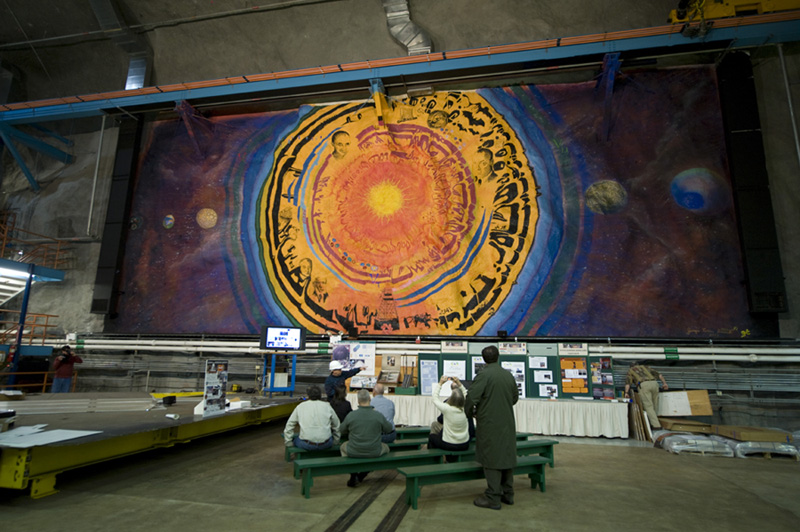It seems unnecessary to put windows in an office located half a mile underground. But even if the employees of the Soudan Underground Laboratory cannot watch the clouds roll by as they sit at their desks, many of them gaze through the blinds at a color-soaked 25-by-60-foot mural painted on the rock wall.
An old ore mine in northern Minnesota houses the laboratory, home to the detector for the Main Injector Neutrino Oscillation Search experiment. Minnesota artist Joseph Giannetti created the mural, which represents the laboratory's work. He stood on a window-washer's platform and painted while others pieced together the detector below, said Soudan Mine Assistant Lab Manager Jerry Meier.
"In order to make everything look right because the rock is so rough, he had to use a projector to project his image on the rock," Meier said. "Then he would paint on it and move the projector over and paint another part."
The MINOS experiment is a long-baseline neutrino experiment that searches for neutrino oscillation -- neutrinos changing from one type to another. To do this, physicists fire a beam of neutrinos straight through the earth from Fermilab in Illinois to the Soudan Mine in Minnesota. It takes the subatomic particles a fraction of a second to complete the 450-mile trip.
Physicists study the make-up of the beam using two detectors, one at the source of the neutrinos at Fermilab and the other in the Soudan Mine. Because neutrinos travel at the speed of light, physicists need to place their detectors far away to give the neutrinos time to oscillate. The MINOS collaboration members are studying neutrino oscillation to see whether it can answer questions about the abundance of matter in the universe.
The mural by the MINOS detector is full of representative images, such as the faces of famous physicists and a picture of the iconic Wilson Hall at Fermilab, the laboratory which creates the beam of neutrinos the MINOS detector studies.
Some of the mural's images are more apparent than others, Meier said. Faces hide in the shadows of bat wings. The word "change," written in different languages, is tucked throughout the mural.
"It's like a treasure hunt," Meier said. "You have to find every little bit."
Listen to an interview with Meier about the mural.
To see a key that labels several of the images in the mural, check out this symmetry deconstruction piece.







